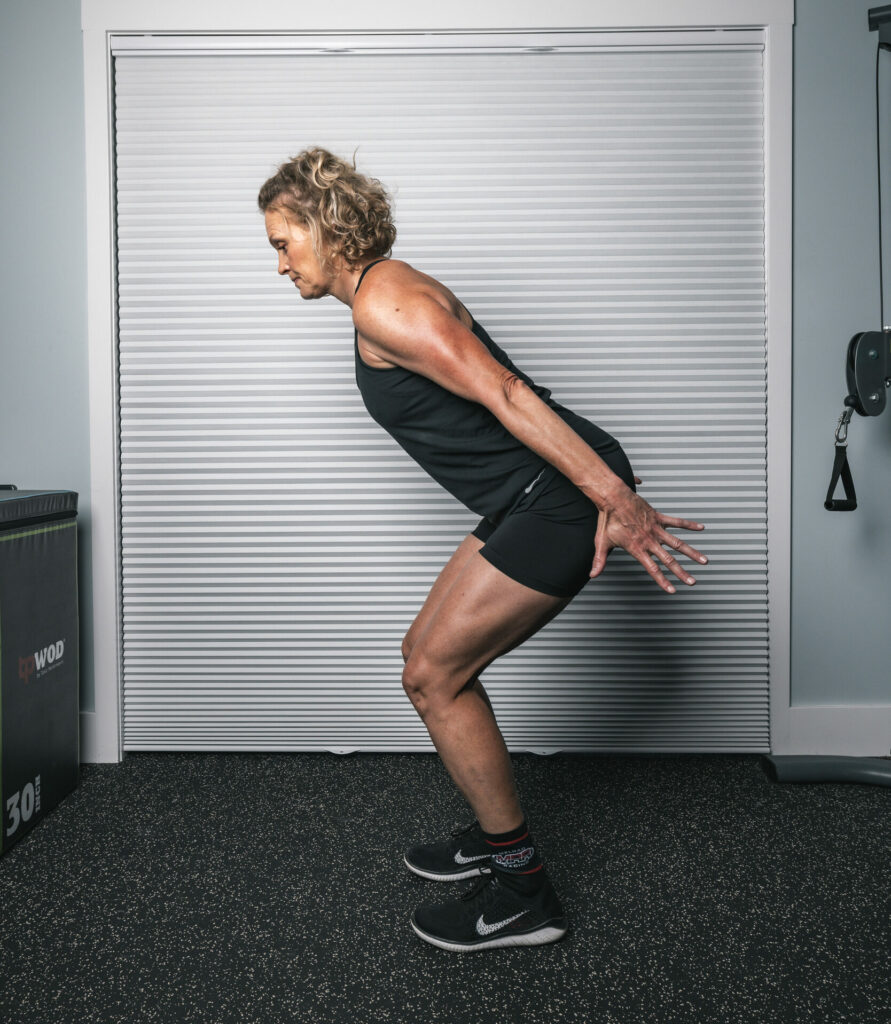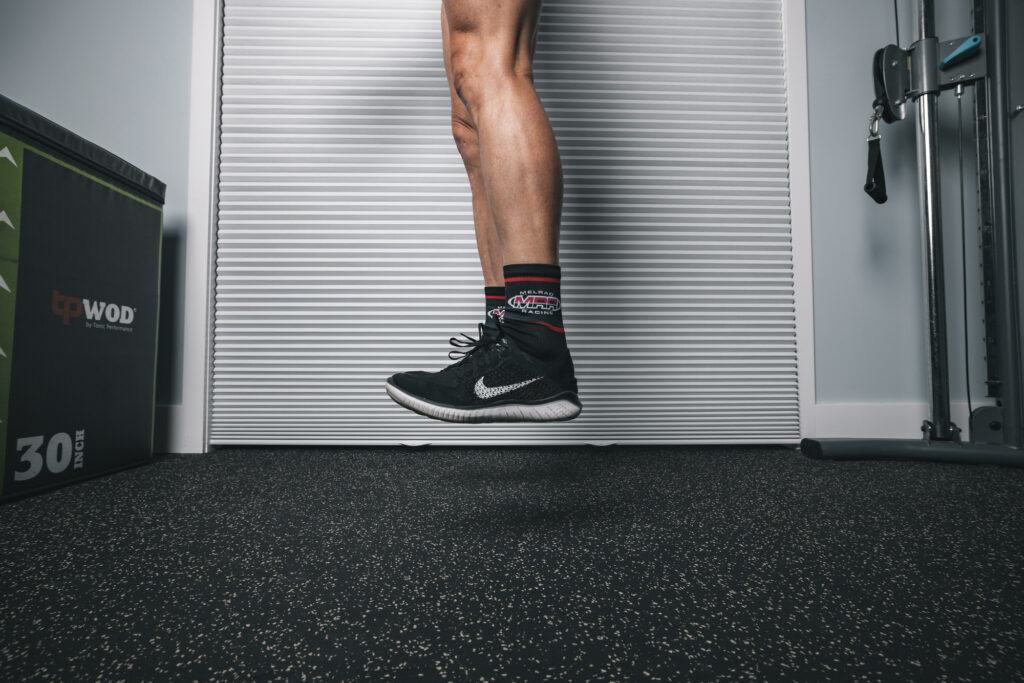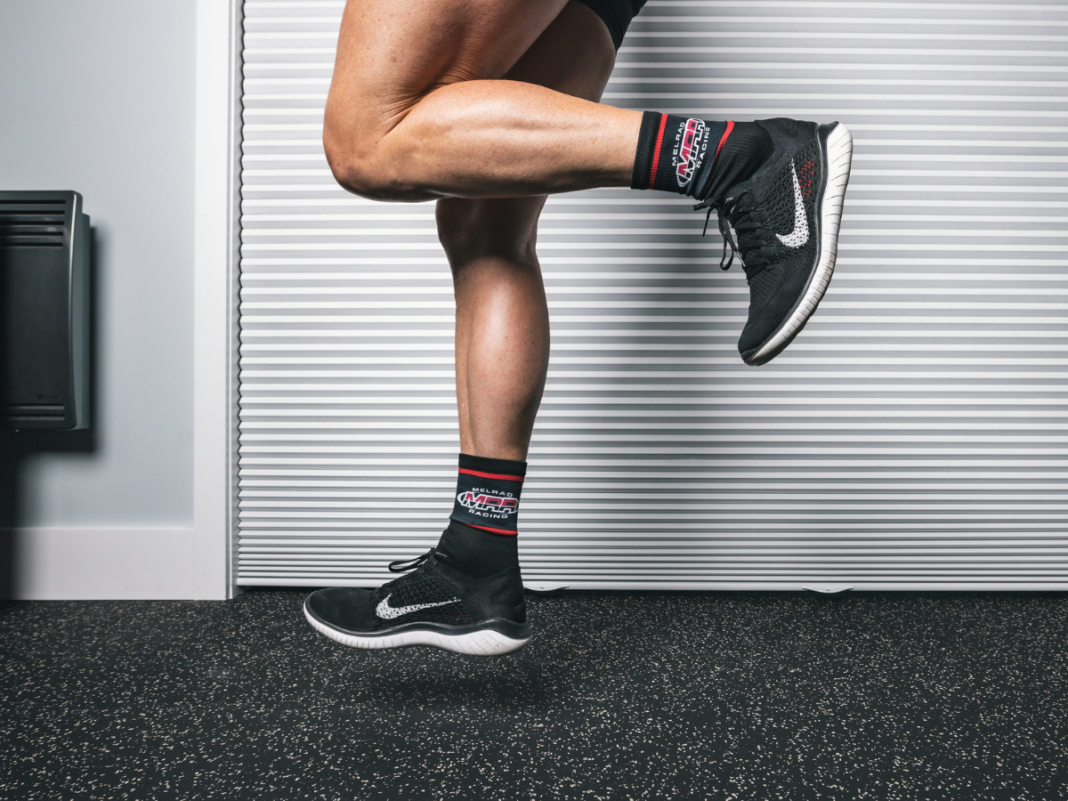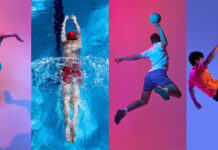Plyometrics are a specific type of jump training. With clear strength and power benefits, this training features prominently in the speed events on the track. There is evidence this type of work also improves running economy leading to benefits for endurance performance. Executed correctly, plyometrics can improve every runner so here is how you can incorporate it into your training.

WHAT IS PLYOMETRICS?
The strict definition of plyometrics is an exercise that couples an eccentric muscle contraction with a concentric one.
When you strike the ground with your foot, muscles around your knee and ankle are lengthened as gravity pulls you toward the ground (eccentric contraction). As a result of this force, your body activates a static stabilizing force in the muscles, so you don’t collapse (isometric contraction). Finally, all of this is reversed as the muscles shorten (concentric contraction) and your body pulls your leg back off the ground to achieve forward propulsion.
The combination of eccentric and concentric contractions is called the “stretch shortening cycle” and plyometrics are used to maximize this reflexive movement.
PLYOMETRICS AND THE NERVOUS SYSTEM
The Achilles tendon is designed to store energy during the concentric and isometric contractions. That energy is only stored for a fraction of a second.
Plyometrics train the body to minimize the time the foot is on the ground so the energy stored in the Achilles tendon is maximized. Quick ground contacts require input from the nervous system.
Small sensors, called proprioceptors, are in muscles and tendons relaying information about how force is being produced in and on the body. These sensors create reflexive muscle contractions in response to force on the ground.
Harnessing this burst of reflexive force comes at zero metabolic cost and is the primary way plyometrics improves running economy.
HOW TO PERFORM PLYOMETRICS
There are two main technical cues when doing plyometrics:
- Create pre-tension in your ankle. Pulling the toes toward the shin before the foot lands tightens all the tissues around the foot/ankle/calf. This means the isometric state is achieved earlier. Aim for your foot to be flat with neither the toe nor the heel pointed at the ground before landing.
- Make contacts quick. Visualizing the ground as hot lava is a good cue. If contacts are long, the exercises are not going to achieve the objective of harnessing stored tendon energy.
INCORPORATING PLYOMETRICS INTO YOUR TRAINING
A good starting point is one to two sessions per week with a total of 30 to 50 total foot contacts.
A session should be broken up into sets of four to six repetitions with two to four sets total and two to three minutes of recovery in between sets.
Nervous system fatigue is harder to quantify than other muscular fatigue markers. Since the main objective is to train quick and reactive movements, athletes should be fresh.
WHERE TO PERFORM PLYOMETRICS
If a surface is too soft, like a grass field, the muscles and tendons work too hard compensating for the lack of stiffness on landing.
Similarly, a concrete surface is too firm, and this excessive resistance prevents the tissues from adapting. A running track, a wood aerobic studio, gymnasium floor, or a turf field are all good surface options.
BOX JUMP
A box jump is not a strict plyometrics exercise but is a good starting place for developing explosive hip extension with bodyweight. With less loading than any of the strict plyometrics described below it is a good bridging exercise.
Most athletes jump on a box that is too high and exaggerate the knee flexion versus enhancing their explosive hip extension.
Straight-legged landings ensure the hip extension is maximized during box jumps.
POGO JUMP (DOUBLE-LEG)
These work on stiffness and elasticity in the Achilles tendon. The idea is to perform four to six vertical jumps minimizing time on the ground between jumps.
Between each round, pull the toes up toward the shin to activate the muscles before landing and be very stiff at the knee and ankle when on the ground.
Aim to jump directly up in the air with minimal forward displacement and maximum hip extension.

HOP AND STICK (SINGLE-LEG)
Hop and stick plyometrics build single-leg power and are good indicators of any imbalance between your right and left legs.
Start by standing on one leg with a neutral posture, drop into a quarter squat and with a quick and explosive movement hop forward on the same leg. The objective is to move as far as possible and to stick the landing with clear stability.
There should be only a slight bend at the ankle, knee, and hip on landing. Neutral back posture is maintained with the chest up. From the initial dip into a quarter squat through the hop there should be similar angles through the ankle, knee, and hip.
Plyometrics are powerful exercises, useful in developing reactivity and explosivity in running.
This is critical for sprinters, but can also be a powerful deliverable for athletes wanting to maximize the pace they can hold in a marathon.
These introductory exercises are great for improving bounce off the ground.
Photography by Matt Cecill Visuals
You may also like: Periodized Training

Read This Story in our 2023 Fall Fitness & Food Issue
Featuring this year’s winners of the Amazing Race Canada, Ty Smith and Kat Kastner on our cover. Inside our latest issue, you’ll find all the inspiration you need to carry you through the autumn season. From delicious high-protein recipes and how to resist the crunch of potato chips to running through the high peaks of the Colorado Rockies and the latest in nutrition and fitness, these pages are packed with expert knowledge and advice.

















